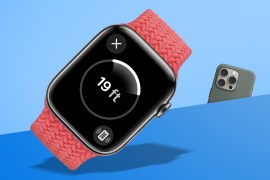Garmin Catalyst review
The training tech that wants to make you a better racing driver

Most forms of motorsports are intrinsically linked with society’s well-heeled, purely because the act of spanking a powerful car or motorcycle around a race circuit is so damned expensive. Thankfully, the humble track day, where you essentially turn up in something mechanically sound and enjoy a few laps of your favourite circuit, attempts to offer a relatively inexpensive way of getting some tyre-shredding kicks.
It might not be common knowledge, but there are several senior petrolheads at Garmin who frequent the track day and believe that quality racing tuition shouldn’t have to cost the earth. The result is Catalyst: a clever piece of kit that draws on Garmin’s extensive sensor, accelerometer and camera tech experience to create a virtual coach for budding Lewis Hamiltons.
Not looking too dissimilar from a large sat nav system, Catalyst harnesses 10 Hz multi-GNSS positioning, image processing, pre-populated track information and accelerometers to build a scarily precise picture of an individual’s on-track performance and use this data to suggest ways to become smoother and faster.
Design: simple but effective
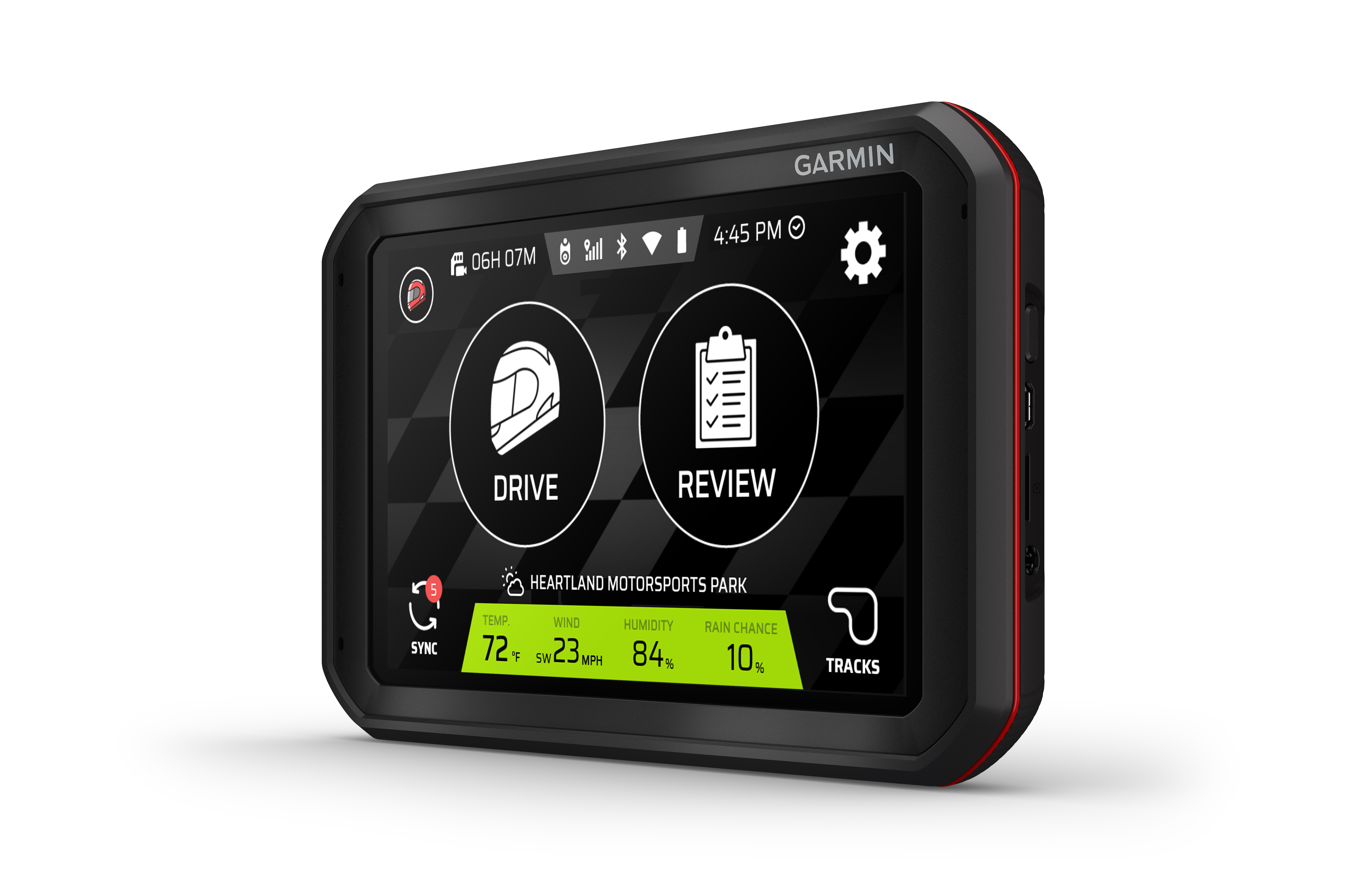
The Garmin Catalyst is basically a 6.95-inch touchscreen tablet that mounts neatly to a windscreen via a large, heavy duty suction cup. All interaction is via this large colour display, which is both bright and easy to read. Well, it has to be, because you’ll only want to offer it a cursory glance when rounding a corner at over 100mph.
The box also contains a small Remote Cam that attaches to the windscreen. This captures 1080p HD video from out front, records it on to the included 32GB microSD card and offers all manner of data overlays so you can see where it’s possible to make up speed or generally navigate the track with greater skill.
Battery life is a pretty measly two hours, but most of its life will be spent plugged into a vehicle’s 12V lighter socket anyway, meaning this only really becomes an issue when poring over data away from the car. But you can also get nerdy with stats on a laptop or receive some very basic info through Garmin’s Connect mobile app.
Having a car with a Bluetooth-ready sound system is essential, unless you have a fancy racing helmet with a headphone jack, as any voice instruction from the unit’s small internal speaker gets lost over the din of an engine and squealing tyres. That’s probably the only design element we’d say lacks some thought here.
Otherwise, the screen is clear, really responsive to touch and wrapped in a solid plastic casing that packs the kind of ruggedness that befits something that will be strapped to a dashboard and slung around a race circuit at scary speeds.
Features: smoothly does it
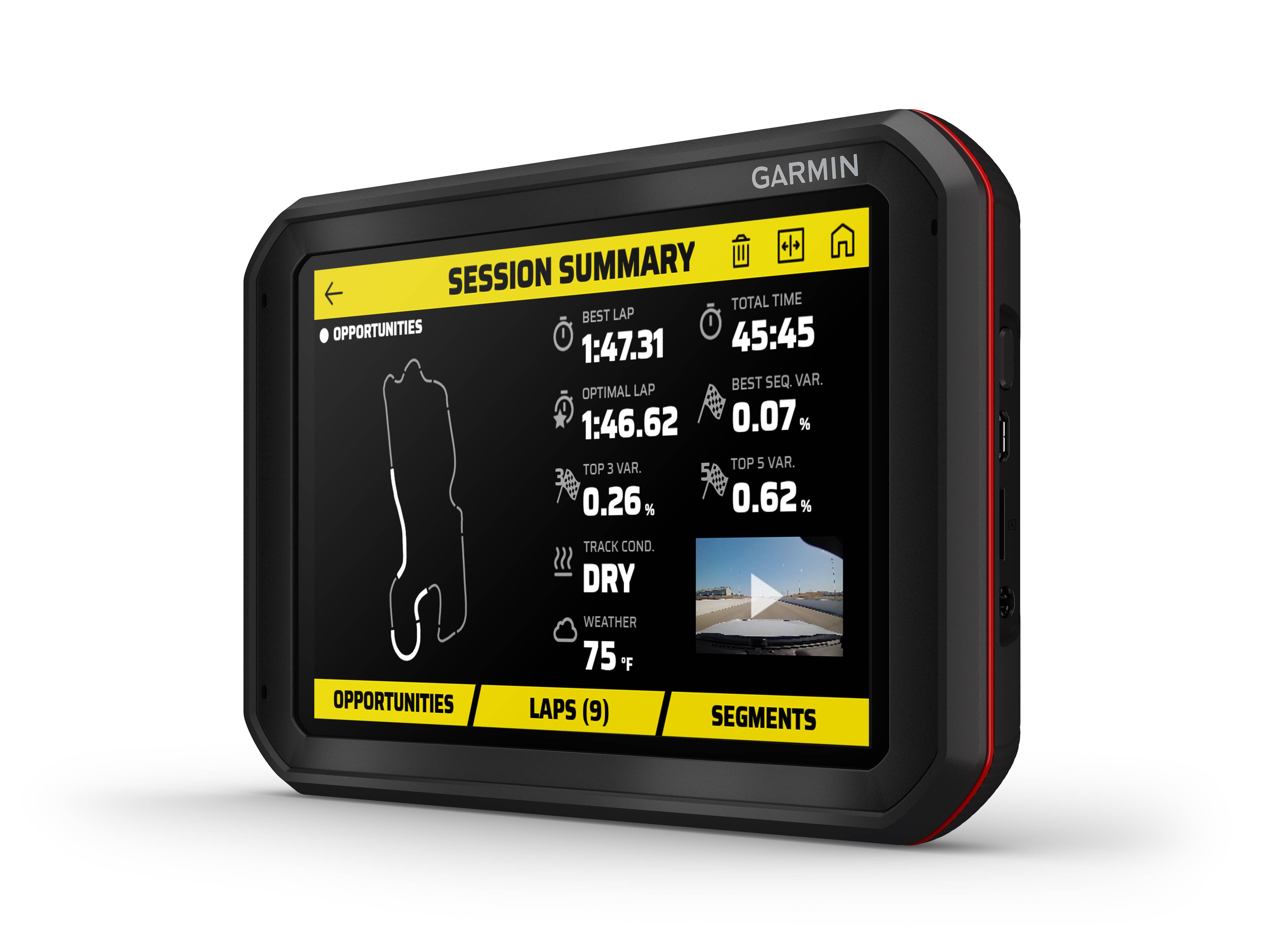
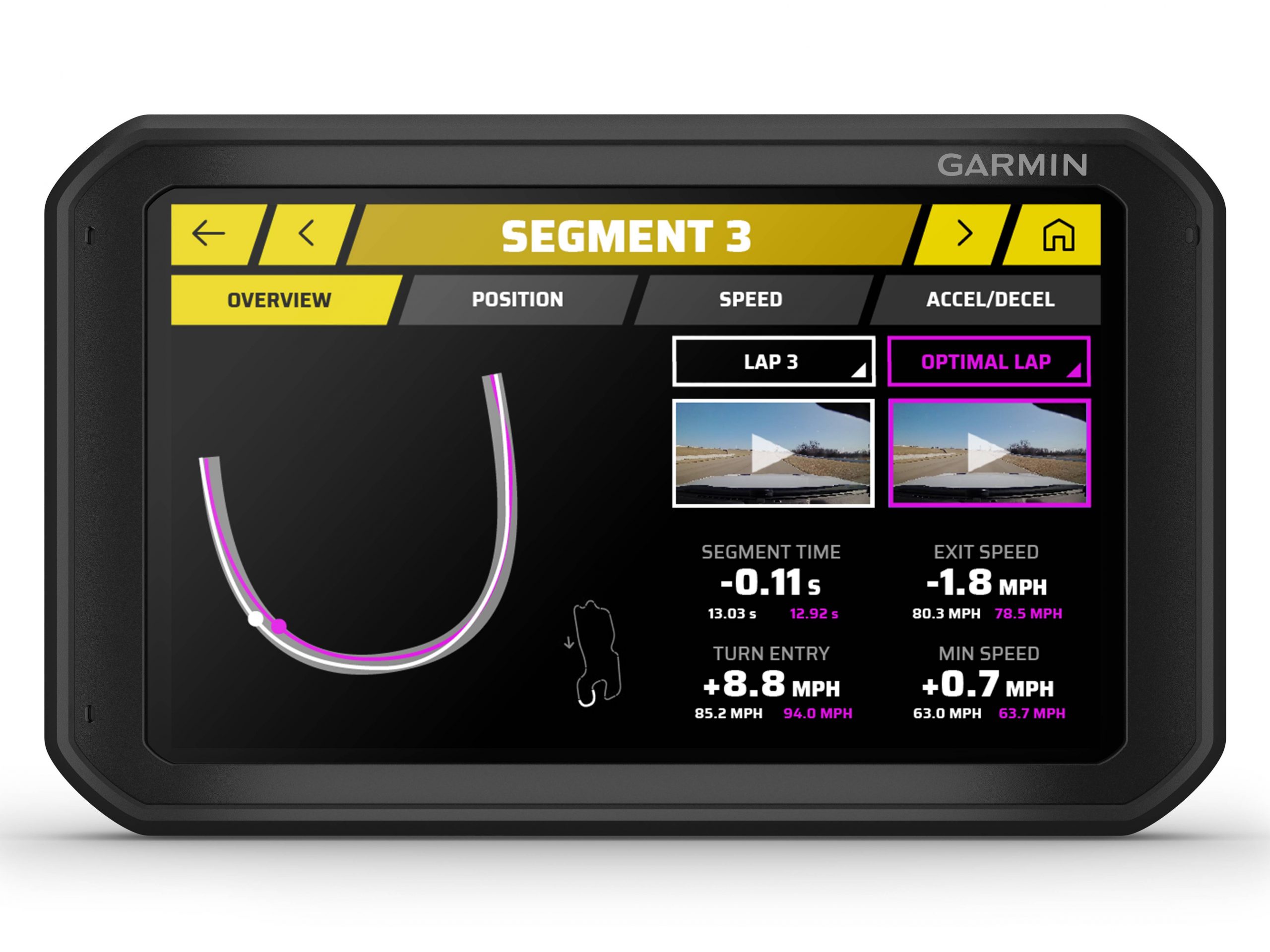
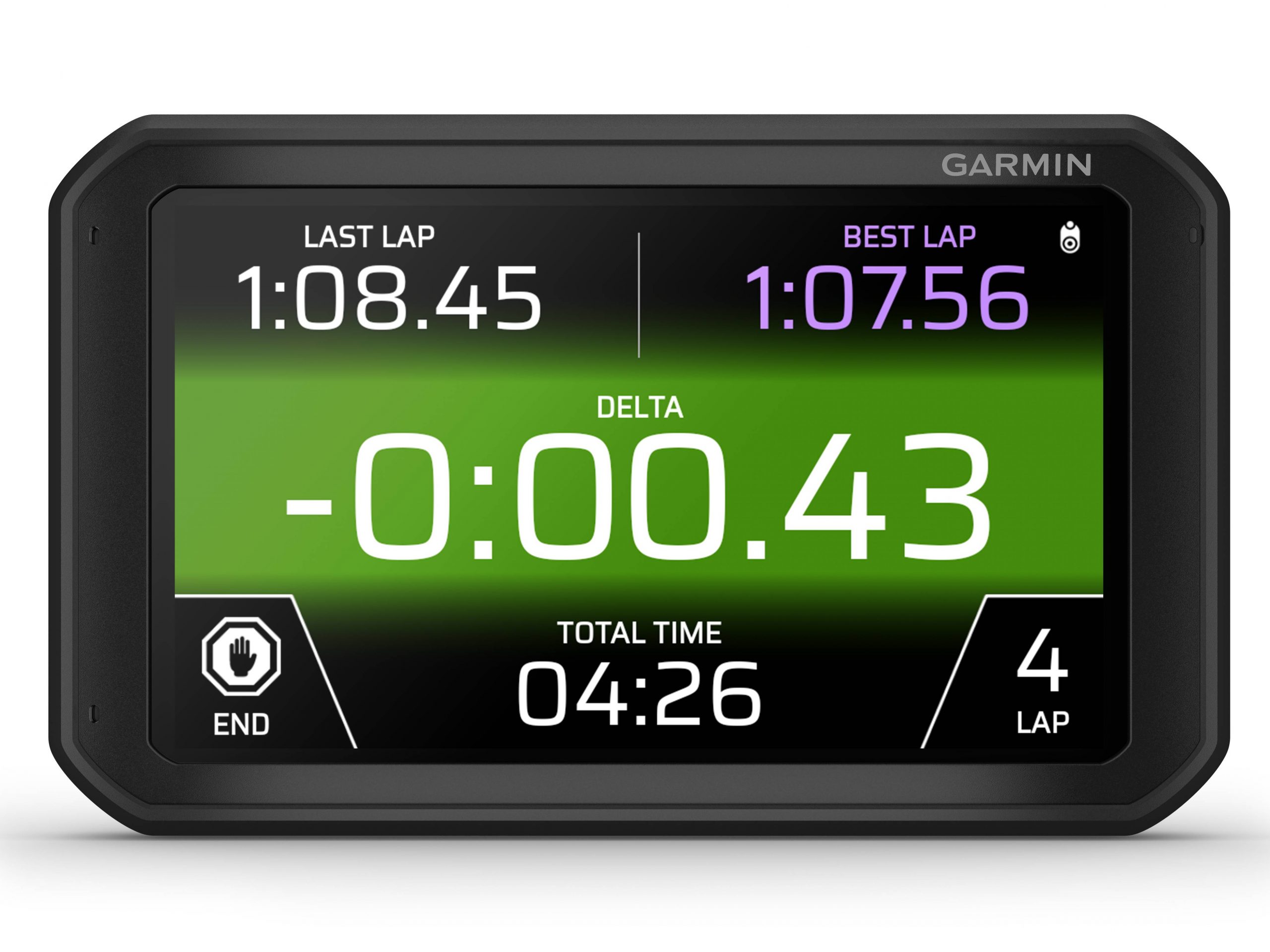
Garmin’s clever 10 Hz multi-GNSS positioning technology allows the Catalyst to build an incredibly accurate picture of an individual’s line around a circuit. This, coupled with racing line information from myriad circus around the world, helps it to determine the most efficient (read fastest) way to get around a track.
To test this, we were plopped inside a Porsche Cayman and pointed towards Thruxton race circuit, now officially the fastest in the UK, with the instruction to go and have some fun and see what recommendations Catalyst would throw up.
To commence our journey towards racing super stardom, all we had to do was fire up Catalyst, select the track from an extensive catalogue and start lapping until our stomach complained. When we came into the pits to stretch our legs (or do a bit of sick), the system would create a ‘session’, where the brainy Garmin would analyse every one of our mediocre laps and generate something it referred to as an – cue ominous Britain’s Got Talent voice over – ‘Optimal Lap”. This was the fastest and most efficient lap we’d driven in any given session, made up of all our slickest corners and smoothest sections.
On top of this, Catalyst presented a series of “opportunities” to help me improve our lap times, including refining our apex points, altering our entry and exit speed and analysing our braking performance. From here, we could then choose to add audible coaching prompts to my next session, which were eerily quiet given this old Porker (the car, not us) didn’t boast a Bluetooth sound system.
When next out on another gruelling “session”, we would occasionally hear a friendly voice saying things like “try carrying more speed through this next corner”, or “nice line through that section, good work”, or, in my case, “push harder, keep going, you’re rubbish…” etc.
During a “session”, the Catalyst kept an eye on our lap time and would display a delta time based on some of our selected best laps, so we could get a clear visual indicator of how we were doing. If the number was accompanied by a menacing glowing red background, we were losing time, and if it was green, we were gradually shaving time off. Unfortunately, there’s no virtual racing line like you’d get on Gran Turismo or Forza, so it’s up to you to memorise the apex points after Catalyst makes its suggestions.
At the end of an arduous day on track, we were prompted to take Catalyst away and really start getting into the nitty gritty of our performance. This is where we could work out where we were slowest, which areas of track we could generally improve upon and, more importantly, ingest a neat video of our optimum lap. This was made up of seamlessly edited video clips captured by the forward facing camera, giving a neat visual indicator of track positioning and braking zones for next time we don our racing suit. Who are we kidding? We don’t even own a racing suit.
Garmin Catalyst verdict
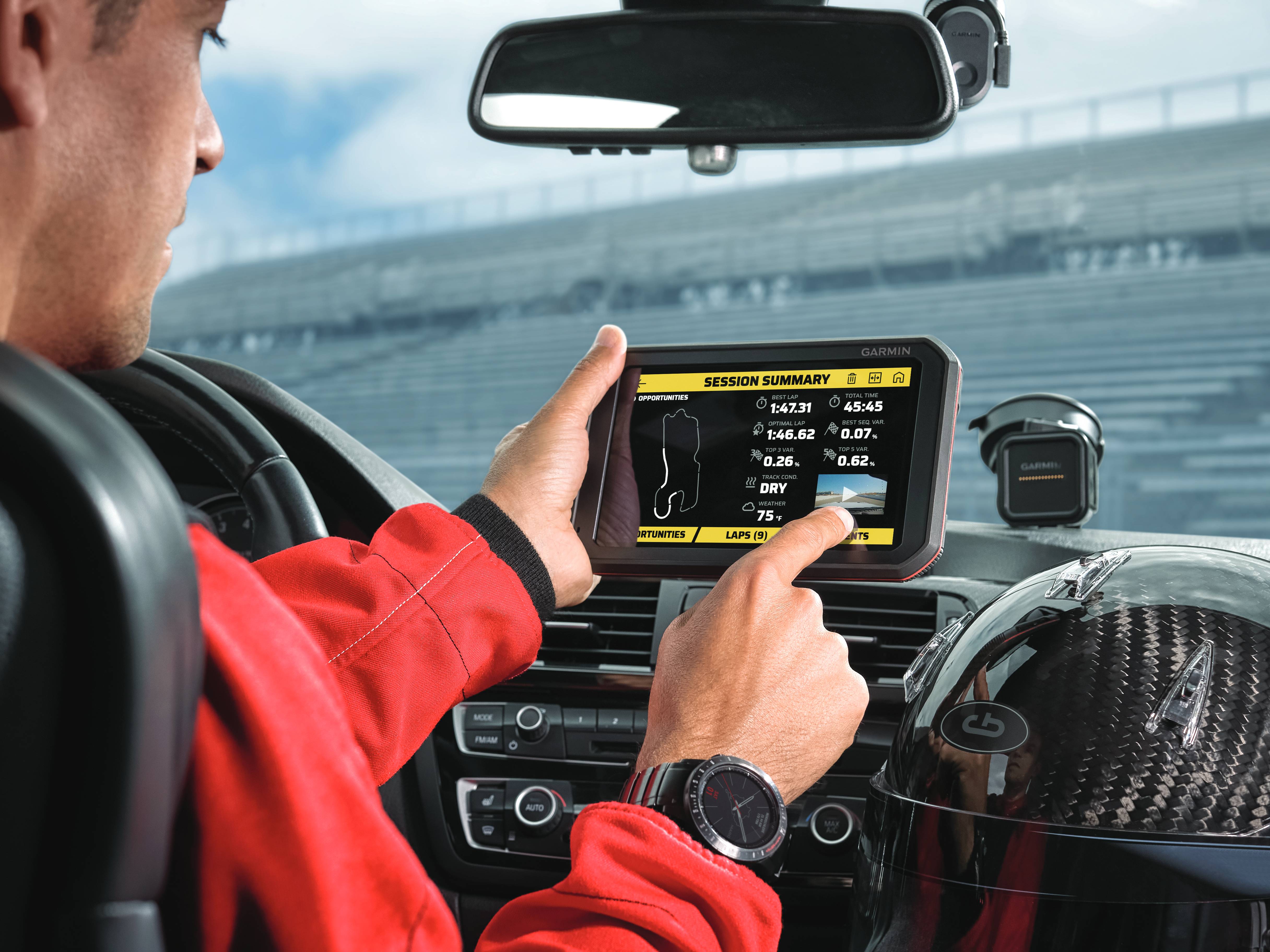
The question on everyone’s lips is, “does the Garmin Catalyst make you a faster driver?” and to that we would annoyingly answer “yes and no”. Garmin’s racing tech differs from a real, physical, flesh and bones coach, who will not only teach consistency and smoothness (like Catalyst does), they will also teach you how to drive faster thanks to an ingrained knowledge of physics and a car’s ability to grip even when it feels massively out of control to the uninitiated. Oh, and a freakish knowledge of racing circuits.
During this experience, we were accompanied by a real racing instructor, who in turn was instructed to keep shtum and let the Catalyst do the coaching. Of course, he couldn’t help himself because we kept convincing him to give us the green light to get back on the gas or gauge his reaction to our entry or exit speed. After all, he had been racing for longer than we’ve been alive, so I trusted his judgement and he could physically feel what was going on with the car.
The Garmin Catalyst is a great tool for teaching consistency and working out, based on your performance that day, ways to gradually improve a lap time by tweaking a racing line or encouraging slightly later braking. Pore over the data, watch the video clips, take on the suggestions and it is definitely possible to make some quick improvements.
But there are limitations. Firstly, Catalyst doesn’t know what you are driving, so won’t adjust its recommendations based on whether you’re in a front-wheel-drive, rear-wheel-drive or all-wheel-drive machine. It also doesn’t know the quality of your tyres or the vehicle’s inherent characteristics, as in, does it want to bite your head off every time you prod the throttle.
Similarly, it will recommend things like braking later or increasing speed into a corner without knowing whether or not you are on the proper racing line or perhaps marginally off it. When barrelling into some of Thruxton’s fastest corners, there literally isn’t any margin for error, so this could prove troublesome. Only a proper instructor sitting next to you can make these split-second decisions with any confidence.
The Garmin Catalyst essentially takes the plethora of confusing information offered by serious data logging competitors, such as Racelogic, and breaks it down into easy-to-digest visuals. It then goes one step further and offers coaching based on said data. In this respect, it’s excellent and offers some really valuable insights, but you still need to learn racing skills to make proper leaps in performance.
At £900, it certainly isn’t cheap and that sort of dosh would buy a decent amount of tuition from a private instructor. But for the track day enthusiast who wants to brush up skills and pore over data, it’s a neat, if a little niche, tool.
Stuff Says…
Great for finessing racing skills but not as good as a human instructor
Good Stuff
Loads of data to pore over
Easy to digest
Helps refine racing skills
Bad Stuff
Poor audio quality without Bluetooth connection
Limited battery life
Won’t replace a human instructor



